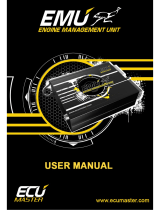
Table of Contents
1 Safety
1.1 General conditions 5
1.2 Personnel and organizational requirements 6
1.3 Transport 7
1.4 Safety regulations for startup and operation 8
1.5 Safety requirements for maintenance and
repair work 9
1.6 Fluids and lubricants, fire prevention and
environmental protection 12
1.7 Conventions for safety instructions in the
text 15
2 Product Summary
2.1 Engine – Overview 16
2.2 Engine side and cylinder designations 18
2.3 Engine – Main dimensions 19
2.4 Ignition order 20
2.5 Technical Data 21
2.5.1 Runtimes at partial load 21
2.5.2 12 V 4000 L62, 16 V 4000 L62 engine data,
fuel optimized (TA-Luft) 22
2.5.3 12V 4000 L62, 16V 4000 L62 engine data,
emissions-optimized (1/2 TA-Luft) 26
2.6 Monitoring, Control and Regulation
Equipment 30
2.6.1 Gas engine phase 3 system – Overview 30
2.6.2 Control cabinet MIS – Overview 32
2.6.3 Purpose of the units 33
3 Operation
3.1 Putting the engine into operation after
extended out-of-service-periods (>3
months) 37
3.2 Putting the engine into operation after
scheduled out-of-service-period 38
3.3 Control, starting and stopping sequences 39
3.4 Starting the engine 40
3.5 Operational checks 41
3.6 Stopping the engine 42
3.7 Emergency stop 43
3.8 After stopping the engine – Engine remains
ready for operation 44
3.9 After stopping the engine – Putting the
engine out of operation 45
4 Maintenance
4.1 50-hours check 46
4.2 Maintenance task reference table [QL1] 47
5 Troubleshooting
5.1 Fault indication on SAM display 48
5.2 SAM – Fault messages 52
5.3 Engine governor – Fault messages 102
6 Task Description
6.1 Engine 133
6.1.1 Engine – Barring manually 133
6.1.2 Checking machine room for smell of gas 134
6.2 Crankcase Breather 135
6.2.1 Oil separator – Filter replacement 135
6.3 Ignition System 137
6.3.1 Ignition system – Ignition timing check 137
6.3.2 Spark plug connector – Replacement 138
6.3.3 Spark plug connector – Removal and
installation 139
6.3.4 Spark plug – Replacement 141
6.3.5 Spark plug – Removal and installation 142
6.4 Valve Drive 144
6.4.1 Valve gear – Lubrication 144
6.4.2 Valve depth – Measurement 145
6.4.3 Valve clearance - Check and adjustment 148
6.4.4 Valve gear – Lubrication 151
6.4.5 Cylinder head cover – Removal and
installation 152
6.5 Gas System 153
6.5.1 Gas supply – Checking gas lines for leaks 153
6.6 Air Filter 154
6.6.1 Air filter – Replacement 154
6.6.2 Air filter – Removal and installation 155
6.7 Lube Oil System, Lube Oil Circuit 156
6.7.1 Engine oil level – Check 156
6.7.2 Engine oil – Change 157
6.7.3 Engine oil – Sampling and analysis 158
6.8 Oil Filtration / Cooling 159
6.8.1 Engine oil filter – Replacement 159
6.9 Coolant Circuit, General, High-
Temperature Circuit 160
6.9.1 Engine coolant – Level check 160
MS150033/04E 2012-07 | Table of Contents | 3
DCL-ID: 0000016352 - 003






















